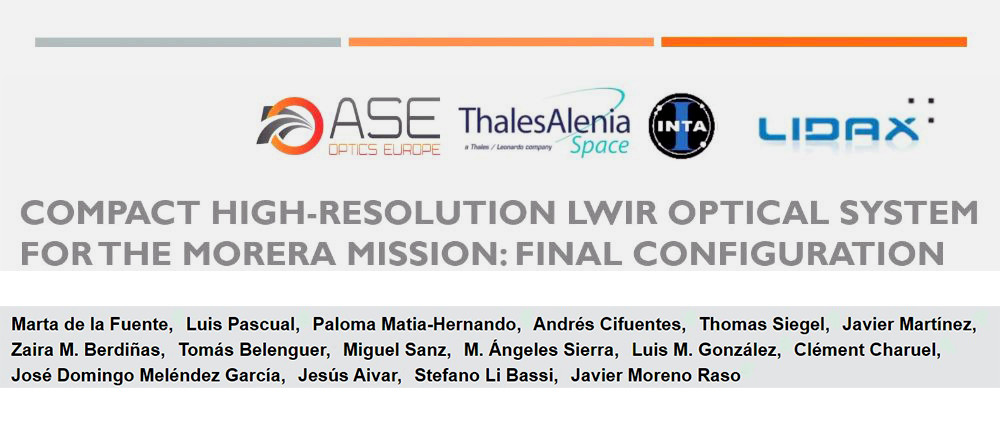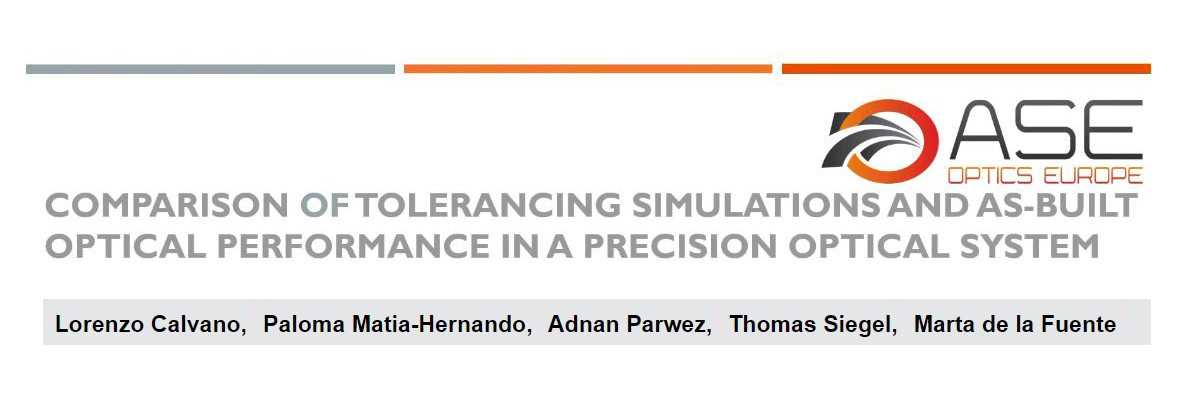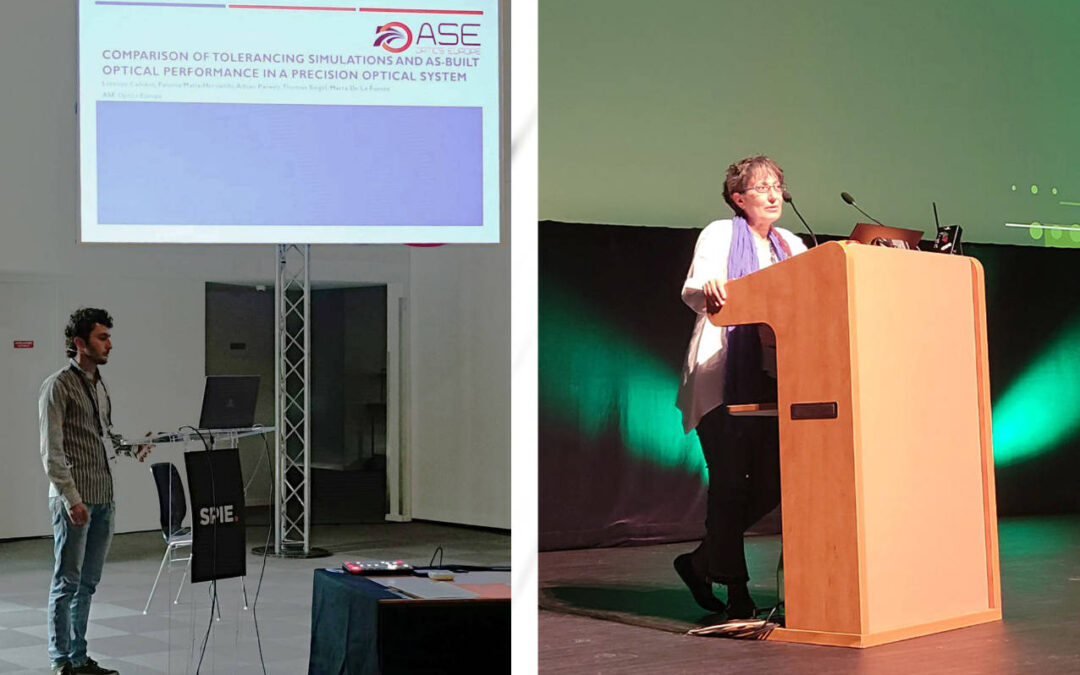Publication of two scientific articles
Two of our most recent scientific articles have just been published in SPIE’s digital library. The first one, titled «Compact high-resolution LWIR optical system for the MORERA mission: final configuration» is about the Cubesat compatible camera that will be used to provide high-resolution agricultural imagery, providing personalised irrigation recommendations directly to end-users via a mobile device. A SW-defined system will use Big Data to combine all relevant information (AEMET, Copernicus, S-SEBI algorithms) to optimise water resources. This article describes the final optomechanical configuration, its performance and behaviour against scattered light. This project represents a major step towards precision agriculture, using high-resolution imagery to optimise irrigation, improving the use of such an important natural resource as water. Read more about how we are innovating in the agricultural sector! The article is available here: http://dx.doi.org/10.1117/12.3015435

The second one, titled «Comparison of simulations of tolerances and as-built optical performance in a precision optical system» presents the results of an ASE Optics study on increasing the accuracy of its optical design simulations.
To properly account for imperfections in lens manufacturing and mechanics, as well as alignment limitations of the optics, it is necessary to run a tolerance analysis during the optical design process. But it is often unclear what level of detail the tolerance model needs to accurately predict the variation in performance, and there are time and cost implications for both overly optimistic and overly pessimistic designs. In this paper, we compare the results of assembling a precision microscope objective with an initially overly pessimistic tolerance analysis and develop an improved tolerance model according to the performance of as-built systems.
The system has been analysed using two industry-standard optical design packages, Zemax and CODE V, comparing the results with each other and with assembly data. The Zemax Monte Carlo analysis matches the actual data by including manufacturing and assembly tolerance statistics, as well as modelling the compensation procedures used in the laboratory. The TOR and CODE V Monte Carlo analyses produce consistently similar results to each other, but are more pessimistic than the Zemax analysis. All three methods agree in reducing the irregularity tolerance in the CODE V analyses to reflect the different tolerance definitions in the software. Although much faster, CODE V’s TOR cannot model complex compensation procedures, suggesting that a preliminary analysis in TOR should be followed by a more thorough Monte Carlo analysis to avoid over-specification of components. Several aspects of the tolerance model developed here are generalisable to other systems.
Find out how we have developed a more accurate tolerance model for our optical designs to ensure that our products meet the highest specifications. The article is available here:
http://dx.doi.org/10.1117/12.3016973

Both papers were initially presented by Marta de la Fuente and Lorenzo Calvano at the SPIE Optical Systems Design conference held in Strasbourg in April 2024.
If you liked this publication of “Publication of two scientific articles” you may also be interested in reading “Photonics for the Agri-Food Industry“.

